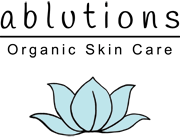Face Masks and Skin Health
Hello again! What a long, strange year it’s been- and we’re only 3\4 through it. I’d like to address some skin issues I’ve been seeing with clients in my aesthetics practice recently and offer some solutions.
Mascne or Acne Mechanica, is a very common issue I’ve been seeing. The skin around the mouth and chin are usually the most affected. It typically presents as blackheads, whiteheads, pustules, papules and cysts. It’s caused by the warm, moist environment created by wearing face masks, along with friction from the mask fabric constantly rubbing the skin. It’s exacerbated by makeup and not washing your face mask often enough.
You can get temporary relief by having an anti-inflammatory deep cleansing facial with extractions. However, Acne Mechanica will come back if you don’t make some changes to either your skin care routine, makeup routine or mask hygiene- or a combination of some or all of these.
Change your mask daily. I can’t stress this enough. We’ve all been there- in your purse is a cute mask you bought off etsy or a friend made that you love and wear for days at a time. At the end of the day, you just leave it in the car or your purse and use it again the next day. BAD IDEA! All that heat and moisture from breathing and sweating breeds bacteria. Additionally, the sweat dries and leaves a salty layer on the skin and mask, which is very irritating to skin, causing redness and inflammation. Imagine working out, getting sweaty, and wearing those clothes all day for several days in a row. Gross, right? Fortunately, this is super easy to remedy. Buy more masks, buy a UV sterilizer or wash your mask every night before bed and let it air dry. A few clients have mentioned buying silk masks, which I’m excited about trying. Silk is hydrophobic (repels water), cooler and more breathable than other fabrics, dries quickly after washing and is naturally antibacterial. The downsides are cost and that there are many masks marketed as silk but are actually polyester, which should be avoided on the face.
Stop wearing makeup under your mask. I realize this isn’t always feasible but to the extent that you can, avoid face makeup (eye makeup is fine) when you know you’ll be masked for hours at a time.
Step up your cleansing routine. Make sure to wash your face as soon as you can after wearing a face mask for prolonged periods. Cleanse thoroughly and rinse even more thoroughly. Use a washcloth if needed to help remove long-wearing makeup and sunscreen. This is also a good time to evaluate your cleanser/s and consider switching formulations if the above advice isn’t improving your mascne. If your skin is on the oily side, an oil cleanser like Rosemary Deep Cleansing Oil, removed with a warm washcloth, is very effective. If you’re dry, Avocado Cleansing Lotion cleans gently. If you have hyperpigmentation or acne scarring, Sugar Cane Renewing Cleanser contains AHAs to help brighten and smooth the skin. If you’d like a personal cleanser recommendation for your skin condition, get in touch. I’m delighted to help!
DIY honey face treatment- A fun but messy way to calm overstimulated skin is a plain honey mask. Just slather honey (raw honey is best but any will be beneficial) over the affected area and leave it for at least 10 minutes. It’s going to drip so put on an old t-shirt or use the time to take a relaxing bath and let it drip into the bath water. Honey is naturally anti-inflammatory, antibacterial and packed with enzymes, vitamins and minerals. It calms, softens and hydrates the skin. I use it in almost every facial treatment. If the dripping drives you crazy, mix it with Lotus & Coconut Milk Balancing Mask.
Another mask-related skin issue is simple dermatitis, which is caused by the same things that lead to mascne. It’s essentially a precursor to mascne, just not as severe. It presents as general redness, maybe a few papules (small raised red bumps) or rough, red patches. It usually responds well to changing masks daily but if it persists, try the other steps above.
